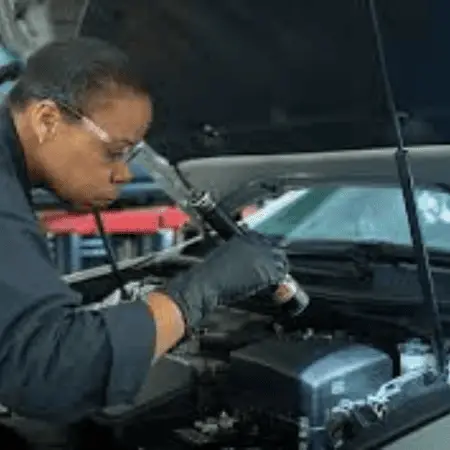If you’ve noticed a decline in your car’s performance or the dreaded check engine light has made an appearance, there’s a possibility that your vehicle is experiencing an open loop fault. In this article I will help you to how to fix open loop faults in cars. So keep on reading…
What are open loop faults in cars?
Open loop faults in cars are problems that occur in a vehicle’s system where the issue isn’t detected or corrected automatically by the car’s computer. Instead, it’s like a one-way street – the computer sends out commands, but it doesn’t continuously check if everything’s going as planned.
Here’s a simple way to understand it: Imagine you’re driving a car, and you tell it to accelerate. In an open loop system, the car just goes faster based on your command, but it doesn’t check if the acceleration is happening smoothly or if everything’s working perfectly. So, if there’s a problem like a clogged fuel line, the car won’t notice and won’t fix it automatically.
In essence, open loop faults mean that the car’s computer doesn’t constantly monitor and adjust things based on feedback. It just follows the instructions it’s given without double-checking if everything’s okay.

Causes of open loop faults in cars
Open loop faults in cars can stem from various causes, often related to the complexity of the vehicle’s systems and the challenges of accurately monitoring and adjusting them in real-time. Here are some common causes:
Sensor Malfunction:
Cars rely on sensors to gather information about parameters such as engine temperature, air-fuel ratio, and wheel speed. If a sensor malfunctions or provides inaccurate readings, the car’s computer may not receive the correct data to make necessary adjustments. For example, a faulty oxygen sensor might inaccurately report the air-fuel mixture, leading to inefficient combustion and reduced performance.
Wiring Issues:
The wiring harness in a car connects various components to the electronic control unit (ECU). A break or short circuit in the wiring can disrupt communication between sensors and the ECU, leading to open loop operation. For instance, a damaged wire connecting the throttle position sensor to the ECU might prevent the engine management system from adjusting fuel delivery properly.
ECU Programming Errors:
The software that controls the ECU’s operation is programmed to interpret sensor data and issue commands to other components accordingly. Programming errors or glitches can result in the ECU not responding appropriately to sensor inputs, causing the system to operate in an open loop mode. These errors can occur during manufacturing, software updates, or due to compatibility issues with aftermarket modifications.
Mechanical Failures:
Components such as fuel injectors, ignition coils, and actuators play crucial roles in the operation of a car’s systems. If these components fail mechanically, they may not function as intended, leading to open-loop faults. For instance, a stuck fuel injector might deliver more fuel than necessary, causing the engine to run rich and inefficiently.
Environmental Factors:
Extreme environmental conditions, such as temperature fluctuations or exposure to moisture, can affect the performance of electronic components in a car. Moisture ingress can lead to corrosion of connectors or circuit boards, disrupting electrical signals and causing open loop faults. Similarly, extreme heat or cold can affect the accuracy of sensor readings, leading to improper engine management.
Component Wear and Tear:
Over time, components in a car’s systems can degrade due to normal wear and tear. This can affect their functionality and reliability, leading to open loop faults. For example, a worn-out idle air control valve might not regulate idle speed properly, causing the engine to run erratically when idling.

How to Fix Open Loop Faults in Cars
Fixing open loop faults in cars involves identifying and addressing the underlying issues that prevent the engine control system from operating in a closed loop mode, where feedback from sensors is used to adjust fuel delivery and ignition timing. Here’s a detailed guide on how to fix open loop faults:
1- Diagnosis Confirmation:
Start by confirming that the car is indeed operating in open loop mode. Check for symptoms such as decreased fuel efficiency, engine misfires, rough idling, or abnormal exhaust emissions. Retrieve diagnostic trouble codes (DTCs) using an OBD-II scanner to identify specific issues reported by the car’s computer.
2- Visual Inspection:
Conduct a thorough visual inspection of the engine compartment, paying attention to wiring harnesses, connectors, hoses, and vacuum lines. Look for signs of damage, corrosion, loose connections, or leaks that could affect sensor readings or disrupt communication with the engine control unit (ECU).
3- Sensor Testing:
Test the operation of critical sensors such as the oxygen sensor, throttle position sensor, mass airflow sensor, and coolant temperature sensor. Use a multimeter or specialized diagnostic tools to measure voltage output, resistance, and response time according to manufacturer specifications. Replace any faulty sensors that are not providing accurate readings.
4- Check and Clean Components:
Inspect and clean components that play a crucial role in engine operation, such as the idle air control valve, throttle body, EGR valve, and PCV valve. Remove carbon deposits, dirt, or debris that may hinder proper operation and airflow. Ensure that these components are functioning correctly and are free from obstructions.
5- Fuel System Inspection:
Check the fuel delivery system, including the fuel pump, fuel injectors, fuel pressure regulator, and fuel filter. Test fuel pressure using a gauge to ensure it meets specifications. Clean or replace clogged fuel injectors, and inspect fuel lines for leaks or restrictions. Verify proper fuel flow and injector operation to ensure the engine receives the correct amount of fuel.
6- Exhaust System Inspection:
Inspect the exhaust system for leaks, damage, or restrictions that could affect exhaust gas recirculation (EGR) or oxygen sensor readings. Replace worn-out gaskets, repair leaks, and remove any obstructions that may interfere with proper exhaust gas flow.
7- ECU Reset and Relearn:
Reset the ECU to clear stored DTCs and adaptive memory. Perform an ECU relearn procedure, if necessary, to allow the ECU to recalibrate sensor values and adapt to changes in the system. Follow manufacturer-specific procedures or use a scan tool to initiate the relearn process.
8- Test Drive and Monitor:
After performing repairs and adjustments, take the car for a test drive to verify that the open loop fault has been resolved. Monitor engine performance, fuel trims, sensor readings, and exhaust emissions during the test drive to ensure everything is functioning correctly.
9- Final Inspection:
Conduct a final inspection of all repaired or replaced components to ensure they are installed correctly and functioning as intended. Check for any remaining symptoms or abnormal behavior that may indicate unresolved issues.
Further Readings
- Why Does My RPM Go Up And Down While Parked – 6 Main Causes
- Nissan No Key Detected After Battery Replacement (Solved)
- How To Manually Engage AC Compressor Clutch – Step By Step Guide
- How To Turn Off Master Warning Light?
Conclusion
Fixing open loop faults in cars involves diagnosing and repairing issues like sensor malfunctions, fuel system problems, and ECU errors to restore closed loop operation. Visual inspections, sensor testing, component cleaning, and system monitoring help ensure optimal engine performance, fuel efficiency, and emissions compliance.
